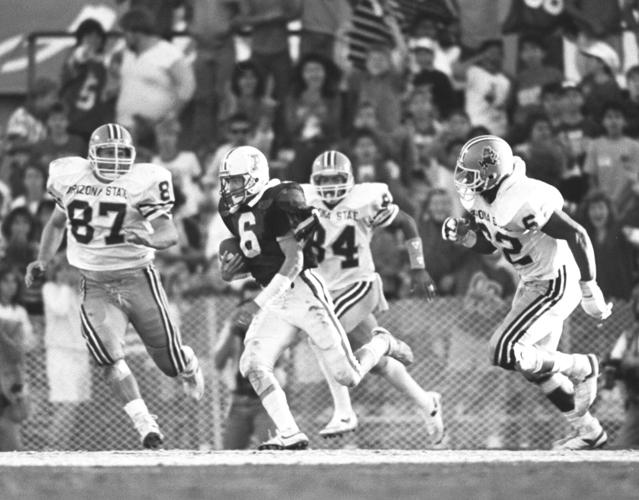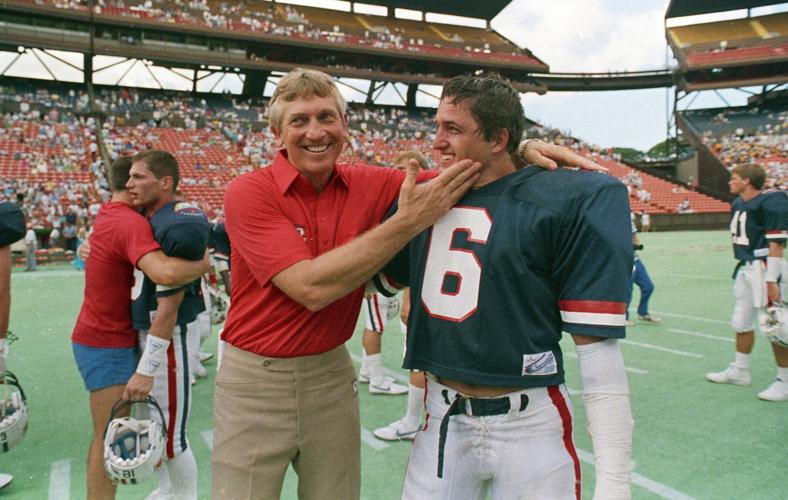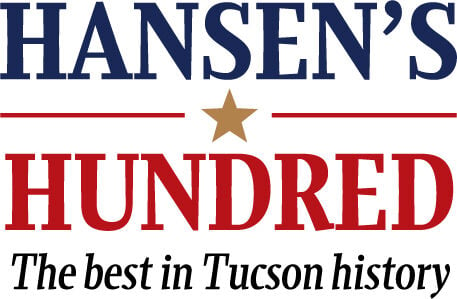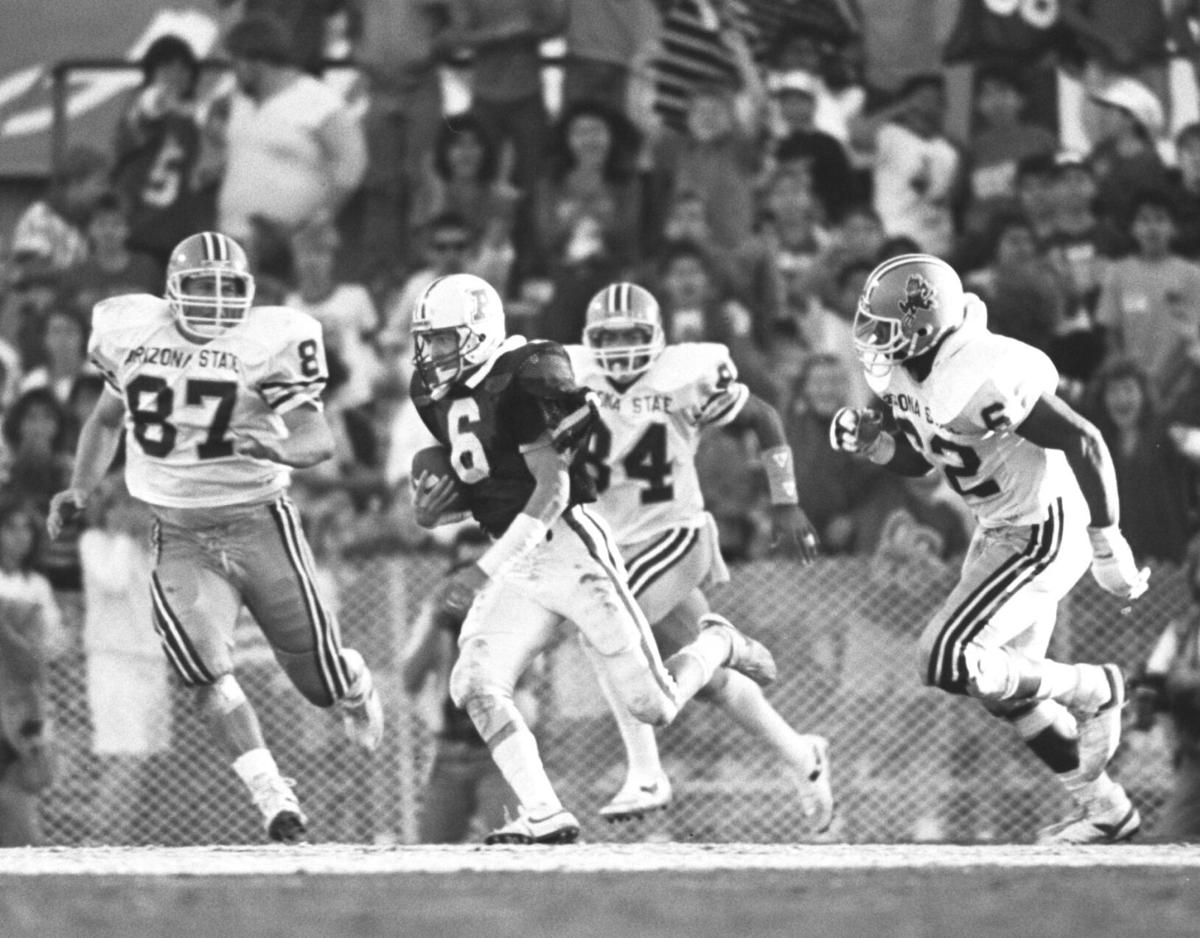Arizona offered Chuck Cecil a football scholarship on his recruiting visit to Tucson in late January 1983. This was a move of faith by Wildcats defensive coordinator Moe Ankney, who knew Cecil barely weighed 150 pounds and was probably a step slow.
But Cecil asked Ankney to wait a week. Stanford coach Paul Wiggin previously scheduled an official visit with Cecil for the following weekend. Stanford? Cecil was fully qualified. With the exception of one B, Cecil had straight A’s as a high school student.
Cecil’s visit to Stanford was as bad as Wiggins’ football team, which would go 1-10 in the ‘83 season, costing Wiggins his job. Stanford did not offer Cecil a scholarship.
When Cecil recounted that story a year ago during a round of golf at the Tucson Country Club, it still rankled him. The competitive fire in the most famous No. 6 in Tucson sports history still burns.
Cecil said that by the time he phoned Arizona a day later, telling Ankney he would accept the UA’s offer, the Wildcats had exhausted their allotment of scholarships for the Class of '83.
“I didn’t know how to play the recruiting game, I was pretty naive," Cecil remembered. “At least it turned out all right."

Safety Chuck Cecil walks off the field with head coach Larry Smith after the 1986 Aloha Bowl. Cecil intercepted 21 passes during his remarkable UA career.
All right?
After Cecil played without a scholarship and redshirted in 1983, UA coach Larry Smith gave him a scholarship. What happened thereafter is like something out of a movie.
Cecil became a two-time All-American at Arizona, the Pac-10’s defensive player of the year in 1987, and an All-Pro safety in 1992. In 2013, he was inducted into the College Football Hall of Fame.
No. 15 on our list of the Top 100 Tucson Sports Figures of the last 100 years, Cecil’s name first surfaced publicly during a Camp Cochise workout in August 1984. When Ankney met with a group of reporters following an afternoon workout, he was asked if anyone got his attention.
“Chuck Cecil," he said. “He’s a heat-seeking missile."
The reporters looked at Ankney with a “Chuck Cecil? A heat-seeking what?" expression.
It was the same Chuck Cecil who famously embedded 10 pounds of weights under his workout clothing at the football team’s weigh-in for the 1984 season, making sure the UA coaching staff didn’t perceive him as too small and write him off before he had a chance to get on the field.
This wasn’t new for Cecil. His junior varsity coach at Hanford High School, near Fresno, told him he was too small to be a football player and to give it up.
And even after the son of Tom Cecil’s, a high school football coach at six small-town California schools, became an impact player for the 1982 CIF champion Helix High School Scotties, Chuck’s coach, Rey Hernandez, urged caution.

Arizona Assistant Coach Chuck Cecil laughs while being interviewed during Arizona Football's media day at Cole and Jeannie Davis Sports Center on Aug. 4, 2021.
“I told Chuck not to ever let a recruiter see him without your shirt on," said Hernandez.
By the time Cecil played his last game at Arizona in 1987, he weighed close to 180. He no longer had to worry about taking his shirt off. He intercepted 21 passes, then a Pac-10 career record. He became pro football’s version of a heat-seeking missile, fearless, drafted by the Green Bay Packers and, in 1993, featured on the cover of Sports Illustrated under the headline: “Is Chuck Cecil Too Vicious for the NFL?"
“I’m not afraid to hurt myself," Cecil told the magazine.
After a seven-year NFL career, with 16 interceptions in 95 games, Cecil coached for the Tennessee Titans and Los Angeles Rams for 15 years. He returned to Tucson in 2017 as a special advisor to the football team and in 2019 was the Wildcats’ interim defensive coordinator for the final month of the season. He is now in his first season as the UA’s safeties coach.
“I’m home," he said. “I always knew I would come back to Tucson."
Ankney, who would leave Arizona to become the head coach at Bowling Green, told me it took him an extended period to fully understand how good Cecil was.
“You look at him and think there’s no way this guy is an athlete," said Ankney in 1986. “Chuck didn’t have the look. It’s still taken us about three years to realize what a good player he is."

Cecil will forever be to linked to the most famous play in UA football history: a 106-yard interception return in the fourth quarter to clinch a 34-17 victory over then-unbeaten and Rose Bowl-bound Arizona State in the 1986 Territorial Cup. A then-record crowd of 58,267 and a CBS television audience watched in awe.
The reaction was so overwhelming that those sitting in the press box thought there had been an earthquake. The press box seats literally shook from the ovation as Cecil outran Sun Devil defenders to the end zone.
The next day’s front page photograph in the Star was an image of Cecil, mobbed by field-storming UA fans at game’s end.
There’s a postscript to Cecil’s college career. When he played at Stanford late in the 1987 season, he intercepted a league-record four passes, one in each quarter, including an interception in the end zone to clinch the victory.
UA president Henry Koffler went into the Wildcat locker room to find and embrace No. 6.
The player that Stanford let get away had come back to haunt them.








